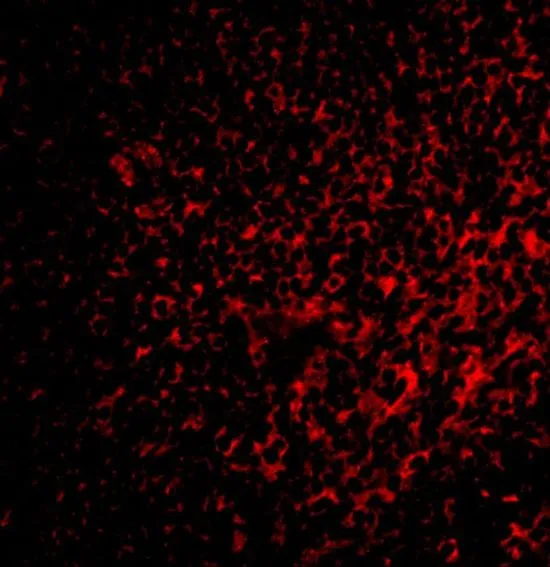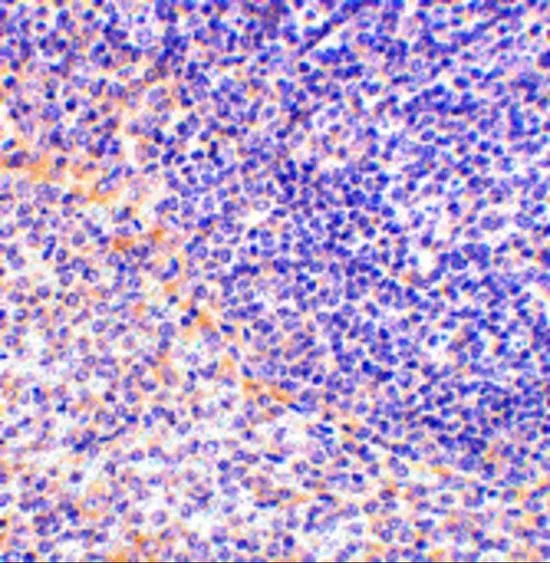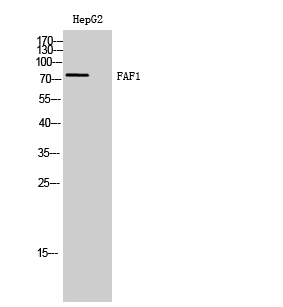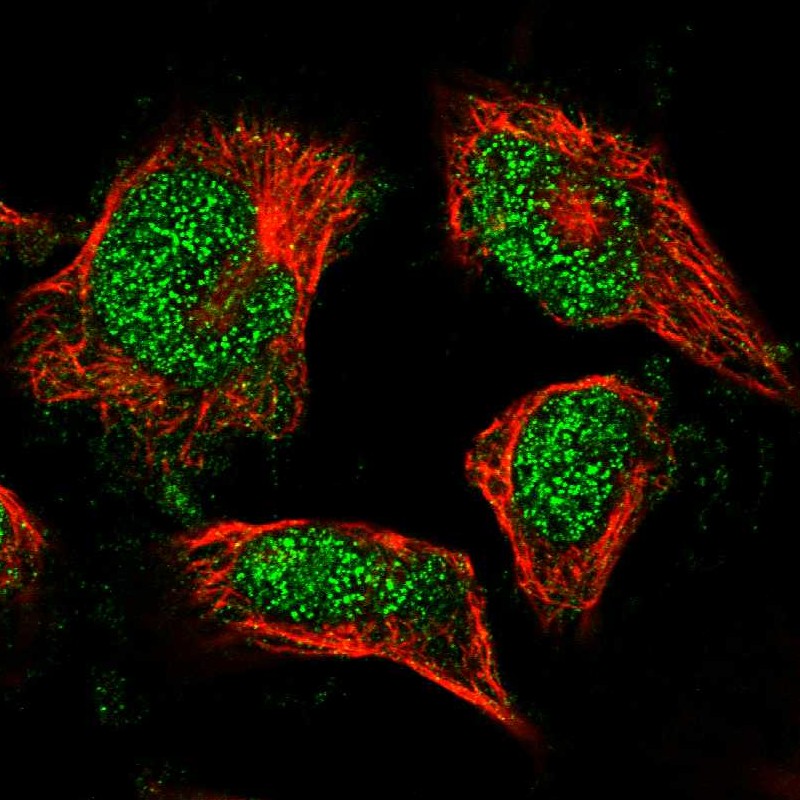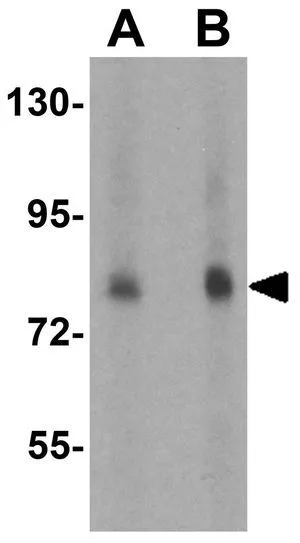
WB analysis of THP-1 cell lysate using GTX31302 FAF1 antibody. Working concentration : (A) 1 and (B) 2 microg/ml
FAF1 antibody
GTX31302
ApplicationsWestern Blot, ELISA, ImmunoHistoChemistry, ImmunoHistoChemistry Paraffin
Product group Antibodies
TargetFAF1
Overview
- SupplierGeneTex
- Product NameFAF1 antibody
- Delivery Days Customer9
- Application Supplier NoteWB: 1 - 2 microg/mL. IHC-P: 2.5 microg/mL. *Optimal dilutions/concentrations should be determined by the researcher.Not tested in other applications.
- ApplicationsWestern Blot, ELISA, ImmunoHistoChemistry, ImmunoHistoChemistry Paraffin
- CertificationResearch Use Only
- ClonalityPolyclonal
- Concentration1 mg/ml
- ConjugateUnconjugated
- Gene ID11124
- Target nameFAF1
- Target descriptionFas associated factor 1
- Target synonymsCGI-03, HFAF1s, UBXD12, UBXN3A, hFAF1, FAS-associated factor 1, Fas (TNFRSF6) associated factor 1, TNFRSF6-associated factor 1, UBX domain protein 3A, UBX domain-containing protein 12, UBX domain-containing protein 3A
- HostRabbit
- IsotypeIgG
- Protein IDQ9UNN5
- Protein NameFAS-associated factor 1
- Scientific DescriptionInteraction of Fas ligand (TNFSF6) with the FAS antigen (TNFRSF6) mediates programmed cell death, also called apoptosis, in a number of organ systems. The protein encoded by this gene binds to FAS antigen and can initiate apoptosis or enhance apoptosis initiated through FAS antigen. Initiation of apoptosis by the protein encoded by this gene requires a ubiquitin-like domain but not the FAS-binding domain. [provided by RefSeq, Jul 2008]
- Storage Instruction-20°C or -80°C,2°C to 8°C
- UNSPSC12352203

